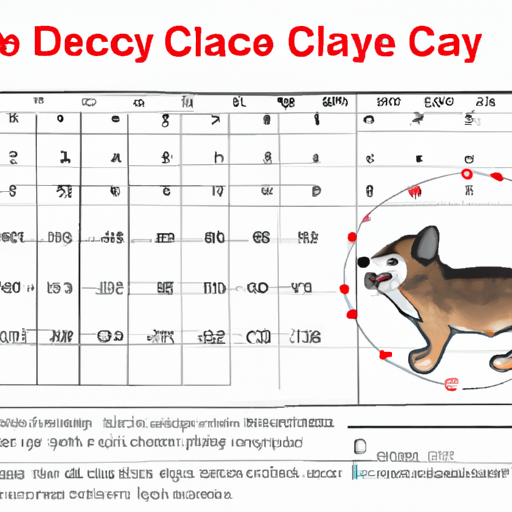Being a caregiver for a pet, especially a dog, is akin to being a parent. You want to know every aspect of their health, their behaviors, and their needs. One topic that often raises questions among dog owners is the female dog’s menstrual cycle, colloquially referred to as her “period”. In this article, we will explore this topic in depth to help you better understand and care for your dog during this time.
Understanding a Dog’s Menstrual Cycle
Unlike human females, a female dog’s menstrual cycle is not monthly. Instead, it is typically semi-annual, occurring roughly every six months, though this can vary between breeds and individual dogs. Known as the estrous cycle, it consists of four key stages:
- Proestrus: During this phase, which lasts around 9-10 days, your dog’s vulva will swell, and she may exhibit changes in behavior.
- Estrus: This is the stage when your dog is receptive to mating. It also lasts about 9-10 days.
- Diestrus: After the estrus phase, the dog enters diestrus, a phase lasting approximately 60-90 days. Even if the dog has not mated, her body may still exhibit signs of pregnancy.
- Anestrus: This is a period of sexual inactivity, lasting anywhere from 60-90 days before the cycle begins again.
Recognizing the Signs
Understanding your dog’s estrous cycle is crucial, but recognizing the signs of each phase is equally important. During proestrus, you may notice the following:
- Swelling of the vulva
- Spotting or bleeding
- Increased urination
- Behavioral changes like restlessness or clinginess
During estrus, these signs may be present:
- Continuation of the swelling
- Change in the color of discharge from red to pink or clear
- “Flagging” behavior where your dog lifts her tail high and moves it to the side
- Increased interest from male dogs
Managing Your Dog’s Menstrual Cycle
Managing your dog’s menstrual cycle is no small feat. Here are some tips to help you through this period:
- Hygiene: Use doggie diapers or pads to manage the bleeding during the proestrus and estrus phases. Ensure to change them frequently to maintain cleanliness.
- Comfort: Your dog may feel uncomfortable during this time. Providing a comfortable place to rest can help.
- Safety: Keep a close eye on your dog to prevent unwanted pregnancies. This is especially important during the estrus phase when your dog is receptive to mating.
Spaying Your Dog: A Consideration
Spaying your dog is a decision that requires careful thought. Here are some pros and cons to consider:
| Pros | Cons |
|---|---|
| Prevents unwanted pregnancies | Major surgical procedure |
| Eliminates risk of uterine and ovarian diseases | Potential for weight gain or behavioral changes |
| Reduces the risk of mammary cancer | Can be costly |
Frequently Asked Questions
How long does bleeding last in dogs?
Bleeding typically occurs during the first two stages of the estrous cycle, proestrus and estrus, lasting for about two weeks.
Is it necessary to breed my dog during her heat cycle?
No, it is not necessary to breed your dog during her heat cycle. In fact, unless you are a professional breeder, it is often recommended to spay your dog to avoid unwanted pregnancies and potential health issues.
How can I comfort my dog during her period?
Providing a comfortable place to rest, keeping her clean, and providing extra attention can all help comfort your dog during her period.
Does spaying have any long-term effects on my dog?
Spaying can have some long-term effects such as weight gain and potential behavioral changes. However, it also has numerous health benefits, including the prevention of certain cancers and diseases.
Understanding your dog’s menstrual cycle can seem daunting, but with knowledge and patience, you can navigate this natural process with ease. Remember, your dog relies on you for comfort and care during this time. Your understanding and support will go a long way in ensuring her well-being.



